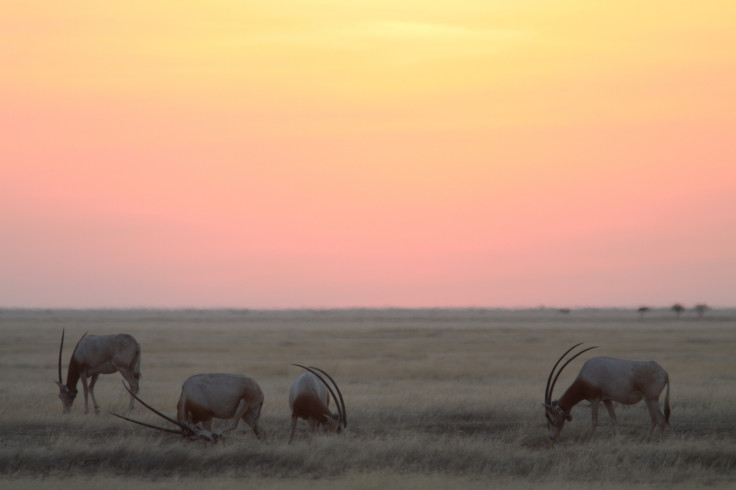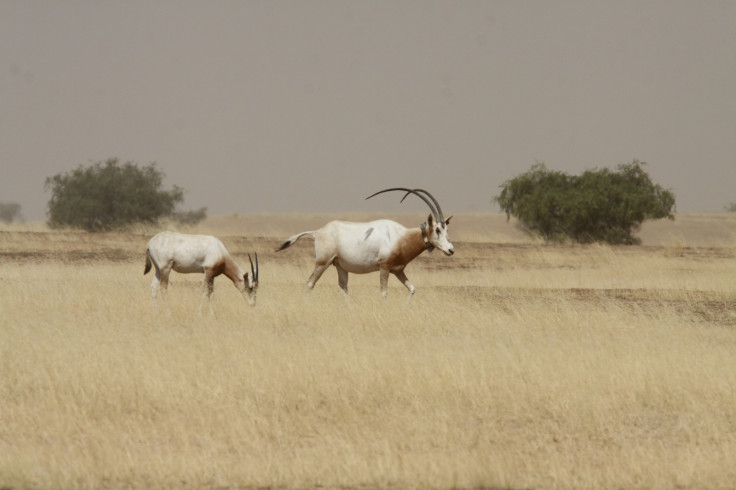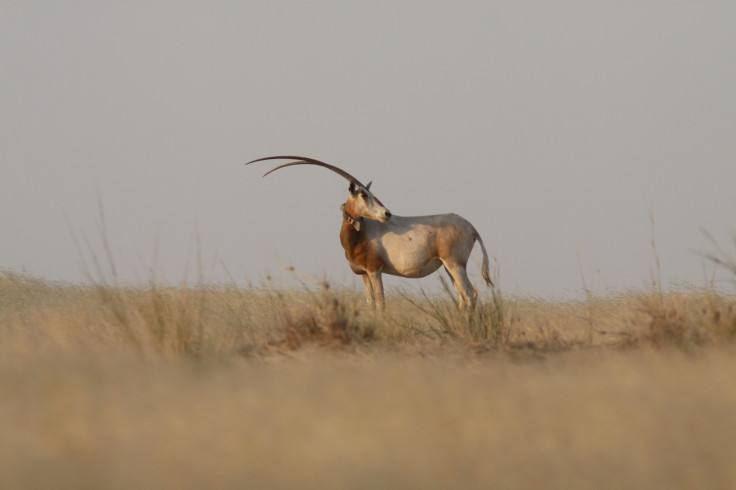Iconic scimitar-horned oryx reintroduced to the Sahel 10 years after going extinct in the wild
Captive oryx antelopes have been reintroduced to Ouadi Rimé-Ouadi Achim Faunal Reserve to great success.
Over the past year, conservationists have successfully reintroduced the iconic scimitar-horned oryx antelope in a natural reserve in Chad, more than a decade after it had become extinct from the wild.
The scimitar-horned Oryx is thought to have occurred in many countries throughout theSahel– the vast semi-arid region of North Africa, south of the Sahara. Up until the late 1970s, it was thriving in Ouadi Rimé-Ouadi Achim reserve, in central Chad - now one of the world's largest protected areas, covering over 78,000sq km.
In the 1970s, the world's oryx population was estimated at 6,000 individuals, with more than 4,000 animals numbered in the Ouadi Rimé-Ouadi Achim region in 1975-1978. However, conflicts and violent unrest over-hunting and habitat loss led to a decline in the global oryx population.

From 1986 onwards, the species was classified on the IUCN red list as endangered, and in 2000, it was officially declared extinct in the wild.
Since then, animals have been released into fenced enclosures in four protected areas in Tunisia, and one in Senegal, as part of long-term reintroduction programmes. However, the most ambitious reintroduction initiative to date is the one that has been taking place in the the Ouadi Rimé-Ouadi Achim reserve.
Home of the gazelles
The project in the result of years of collaboration between the Zoological Society of London (ZSL), the Smithsonian Conservation Biology Institute, the Environment Agency of Abu Dhabi, the Government of Chad, and the Sahara Conservation Fund (SCF).
After careful surveys between 2009 and 2013, the scientists identified the Ouadi Rimé-Ouadi Achim Game Reserve as the best place to reintroduce captive oryx in the wild.
Although the area is home to many nomadic herdsmen and their livestock, they estimated that there is sufficient space for them to cohabit with a self-sustaining population of 500 wild oryx, introduced over the next five years.

Other species are still thriving in the reserve – such as the largest remaining population of dorcas gazelles in the world or a small population of the critically endangered dama gazelle – further backing up the idea that the area provides an ideal location for the reintroduction of oryx.
In March 2016, the scientists released a first group of 21 captive oryx in the reserve, in a fenced area at first, to allow them to get used to their new environment. By August, each were released for good into the wild, fitted with GPS satellite collars to be monitored by scientists from a distance.
The whole initiative was a success, made even more impressive by the fact that one female gave birth to a calf in September 2016 – the first scimitar-horned oryx calf to be born in the wild in the last three decades.

"The birth of the first calf has been hugely encouraging, as mother and baby both appear to be doing well. We have high hopes that one day in the not too distant future, herds of scimitar-horned oryx will once again be a common sight across the huge reserve and hopefully beyond", said Tim Wacher, ZSL conservationist.
In January 2017, the second part of the project has been initiated with another group of 14 captive oryx introduced into the reserve, to join the first. The scientists are very optimistic that the animals will begin thriving in the wild again, more than one decade after their extinction outside of captivity.
© Copyright IBTimes 2025. All rights reserved.






















